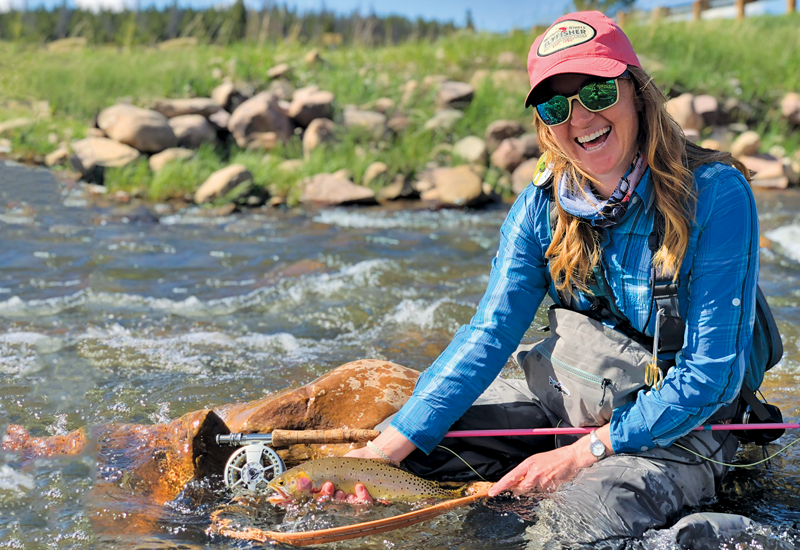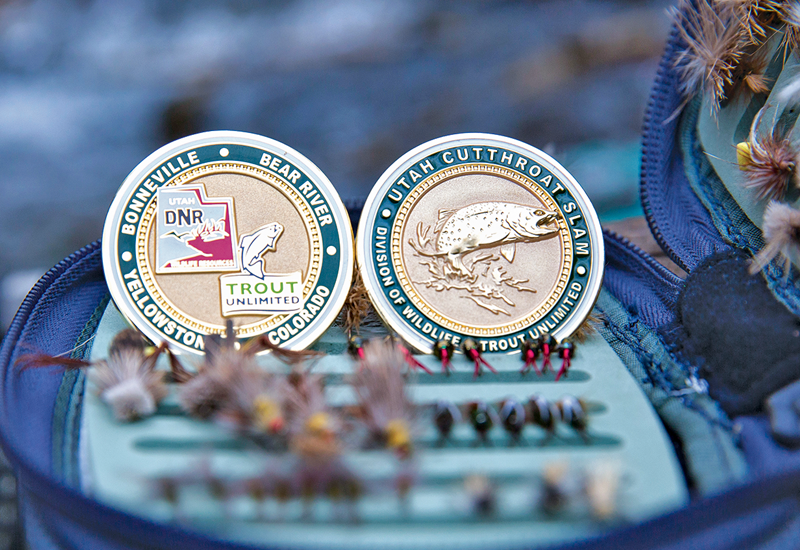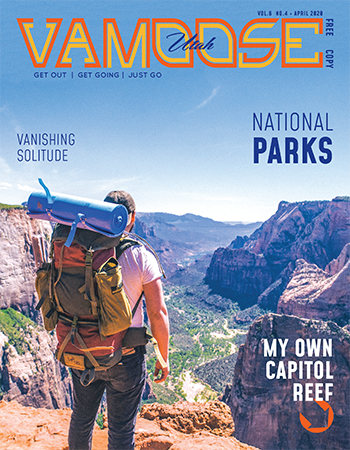The Utah Cutthroat Slam celebrates fly-fishing while protecting native trout of Utah
By John Rasmuson
As Brigham Young was scanning the Salt Lake Valley from the mouth of Emigration Canyon in 1847, Wilfred Woodruff may have been studying the nearby creek and fingering his fishing pole.
Woodruff brought the bamboo fly rod home from England where he had been a missionary six years before. An avid fly-fisherman, he was probably the first of the Latter-day Saints to cast a feathery lure on waters west of the Mississippi River. In a stream near Fort Bridger, he reported catching 12 fish on artificial flies, more than the combined catch of all his bait-fishing brethren that day.
In subsequent years, Woodruff, who became the fourth president of The Church of Jesus Christ of Latter-day Saints in 1889, fished the canyon streams in the Wasatch Range for cutthroat trout.
He soon recognized his success was affected by an increasing number of hungry anglers. His lament, shared by fly-fishermen today, boiled down to the following: not enough fish, too many fishermen.

Heidi Lewis used this Colorado River cutthroat trout to complete her Utah Cutthroat Slam
As the native cutthroat trout population declined, new species—rainbow, brook and brown—were imported from out of state as early as 1883. The cutthroats were crowded out in many habitats. In recent years, however, there has been a statewide effort to bring back the native trout. In 2013, for example, the Utah Division of Wildlife Resources (DWR) removed the non-native fish from the stream in Mill Creek Canyon and reintroduced Bonneville cutthroats, the trout species that Woodruff caught with his English flies.
Three years later, DWR partnered with Trout Unlimited in “an angling adventure to support our native trout legacy” called the Utah Cutthroat Slam. The slightly audacious title notwithstanding, its goal is pretty straightforward: catch, photograph and document one of each of the four cutthroat subspecies in Utah.
It is not as easy as it seems. Anyone who has ever cast a fly line into a headwind knows that fly-fishing has inherent challenges. The Cutthroat Slam ratchets up the difficulty because the four subspecies of cutthroat trout—Bonneville, Yellowstone, Bear River and Colorado River—are as geographically dispersed as their names suggest. You won’t find a Yellowstone cutthroat in the Weber or Fremont rivers. In fact, the habitat of the Yellowstone cutthroat is confined to the remote Raft River drainage on the Utah-Idaho-Nevada border 150 miles northwest of Salt Lake City.

Stockton Gayheart shows size doesn’t matter when it comes to providing excitement when catching fish. This Yellowstone cutthroat trout helped Stockton complete his Utah Cutthroat Slam
There, as they do in so many other places in Utah, the trout live in little, brush-lined streams where they are hard to reach and easy to spook. Some cutthroats thrive in the state’s reservoirs, however. Strawberry and East Canyon have produced lunkers weighing upwards of 20 pounds.
Since the Utah Cutthroat Slam was launched three years ago, Faith Jolley, a spokeswoman for the DWR, says 182 women and 1,430 men have paid the $20 registration fee and embarked—at their own pace—on a quest to catch one fish from each of Utah’s four cutthroat subspecies. According to Jolley, 31 women and 346 men have been successful and have received a certificate and medallion from the DWR. A few, such as Brian and Brooke Harris, have accumulated a number of medallions, earned by catching qualifying fish in different waters each time they began anew.
DWR allows registrants a lifetime to catch and document the four, but like ultra-marathoners who are not challenged by 5K fun-runs, some anglers up the ante. They attempt the Cutthroat Slam in a single day, driving hundreds of miles in the process.

Utah Cutthroat Slam insignias
One of them is Jeff Denning, an economics professor at Brigham Young University. He and two friends set out from Orem at 6:15 a.m. on Sept. 10, 2016. They drove to the South Fork of the Provo River where all three soon landed Bonneville cutthroats as temperatures crept into the mid-30s. They then made their way into the Uinta Mountains where they were able to catch Bear River and Colorado River cutthroats. It took two-and-a-half unnerving hours to land a Bear River cutthroat—more than twice the time their planning had allocated.
The sprint to the finish was a race with the sun. By the time they had driven across the state to the Utah-Nevada-Idaho border region, not much daylight remained for catching the final fish. In Sawmill Canyon Creek, the sun setting, Denning caught an 8-inch Yellowstone cutthroat. His two friends came up empty handed as darkness set in. It was a long trip back to Orem. By the time the threesome reached home, it was near midnight, and they had logged 600 miles in the car. In retrospect, Denning says it was a “completely unique fishing experience.” But unlike the typical, relaxing day on a river or lake, “there was more adrenaline, more stress and a different feeling than I have ever had on a fishing trip,” he says.
Harris found the exploration of out-of-the-way parts of Utah to be an unexpected benefit. After completing multiple slams, Brian Harris wrote in a Trout Unlimited blog: “We came to the realization we were more interested in exploring the land than we were about actually completing the challenge. In planning successive slams, we just picked the first water way that interested us that also met all the habitat requirements.”
Across the state, habitat-improvement projects have been funded by the proceeds from the slam. Brett Prettyman, Trout Unlimited’s Intermountain communications director, says all but one dollar of the $20 registration fee is devoted to native cutthroat conservation. “More than $30,000 has been used to fund more than a dozen projects,” he says. Removal of a weir in Mill Creek Canyon is one example.
The Utah Cutthroat Slam would surely have had Woodruff’s blessing. Even so, he would have been perplexed by its endorsement of the catch-and-release practice observed by most, modern-day fly-fishermen. In Woodruff’s day, a cutthroat trout was better kept for the frying pan than returned to the river. And therein lies the genesis of the Utah Cutthroat Slam.



